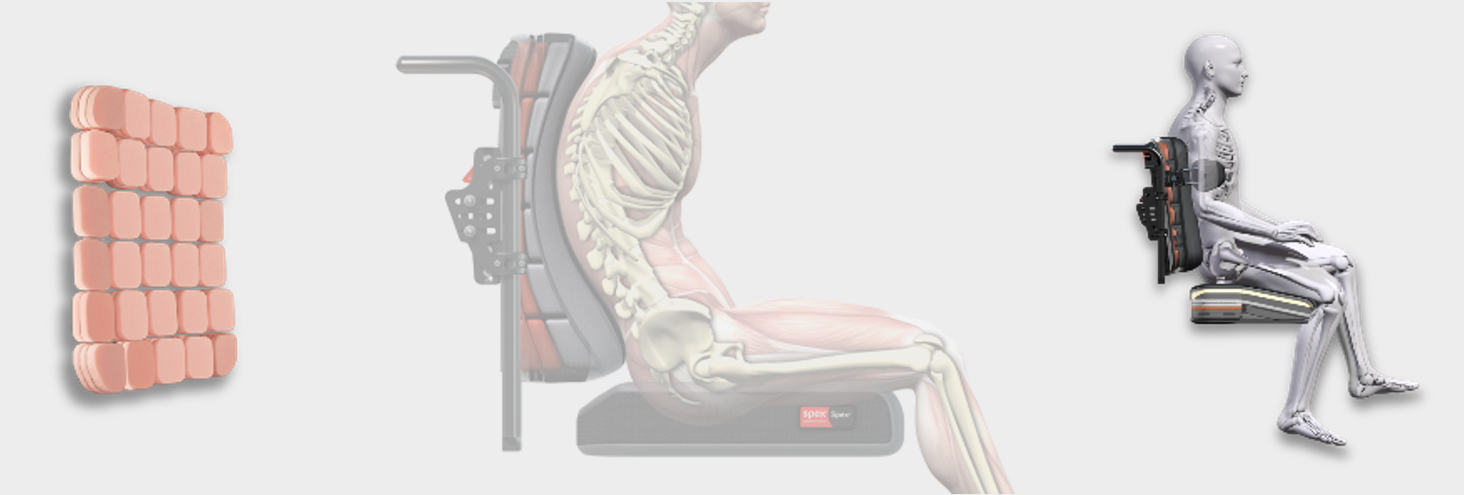Welcome to Part 2 of this series exploring the effect back supports can have on sitting posture. First, to recap:
The back support height and width selection is dependent on a number of factors. The base of the back support generally runs from the height of the posterior superior iliac spines (PSIS) to the chosen height against the user’s back depending on the support needed for stability and the freedom of movement required at the shoulders (e.g. if a wheelchair user is self-propelling).
The cushion and back supports are primary surfaces involved in functional seating and both have a direct effect on sitting posture. This is a two-part blog that explores how the back support can offer biomechanical support to maintain pelvic alignment and stability, particularly in the transverse plane (pelvic rotation) and sagittal planes (posterior/anterior pelvic tilt).
We reviewed how the back support can respond to pelvic rotation in Part 1, now let’s explore the following question:
A pelvis that is level from the ASIS to PSIS on the wheelchair cushion helps to maintain the natural curves of the spine in the lumbar, thoracic and cervical regions. When we sit, we tend to move into slight posterior pelvic tilt. For this reason we tend to find our most commonly used seat systems (e.g. car seat, office chairs, some armchairs) include an optional lumbar support to maintain a neutral pelvic tilt and optimal trunk alignment whilst we are seated on them. We need to first consider our seat cushion and then our back support cushion, in order to optimise our sitting position in a wheelchair.
The back support angle might also be slightly reclined to meet the pelvic alignment and help the trunk rest against the back support – this position can support a relatively neutral pelvic tilt, but is likely to require contouring in the lumbar regions.
We all adopt different sitting postures depending on our seating surface and, because our body shapes are unique and comfort on the same seating system can vary, we need to consider a combination of contouring and angle adjustment in the seat and back support in the same way as we will not all find the same office chair comfortable in a single configuration.
Back supports should optimise pressure distribution and stability to the pelvis and trunk. The back support can have a direct effect on sitting posture and our aim is to optimise the contouring to positively influence posture to reduce pain during prolonged sitting periods and encourage optimal alignment to support function for quality of life.
- Babinec, M., Cole, E., Crane, B., Dahling, S., Freney, D., Jungbluth-Jermyn, B., Lange, M. L., Pau-Lee, Y.-Y., Olson, D. N., Pedersen, J., Potter, C., Savage, D., & Shea, M. (2015). The Rehabilitation Engineering and Assistive Technology Society of North America (RESNA) Position on the Application of Wheelchairs, Seating Systems, and Secondary Supports for Positioning Versus Restraint. Assistive Technology, 27(4), 263–271. https://doi.org/10.1080/10400435.2015.1113802
- Costigan, F. A., & Light, J. (2011). Functional Seating for School-Age Children With Cerebral Palsy: An Evidence-Based Tutorial. Language Speech and Hearing Services in Schools, 42(2), 223. https://doi.org/10.1044/0161-1461(2010/10-0001)
- Czaprowski, D., Stoliński, Ł., Tyrakowski, M., Kozinoga, M., & Kotwicki, T. (2018). Non-structural misalignments of body posture in the sagittal plane. Scoliosis and Spinal Disorders, 13(1), 6. https://doi.org/10.1186/s13013-018-0151-5
- Kobara, K., Eguchi, A., Watanabe, S., & Shinkoda, K. (2008). The influence of the distance between the backrest of a chair and the position of the pelvis on the maximum pressure on the ischium and estimated shear force. Disability and Rehabilitation. Assistive Technology, 3(5), 285–291. https://doi.org/10.1080/17483100802145332
- O’Sullivan, S. B., Schmitz, T. J., & Fulk, G. (2019). Physical Rehabilitation (7th ed.). F.A. Davis.
- Pope, P. (2007). Severe and Complex Neurological Disability. Elsevier. https://doi.org/10.1016/B978-0-7506-8825-3.X5001-5
- Samuelsson, K., Bjӧrk, M., Erdugan, A.-M., Hansson, A.-K., & Rustner, B. (2009). The effect of shaped wheelchair cushion and lumbar supports on under-seat pressure, comfort and pelvic rotation. Disability & Rehabilitation: Assistive Technology, 4(5), 329–336.
- Sprigle, S., Wootten, M., Sawacha, Z., Thielman, G., & Theilman, G. (2003). Relationships among cushion type, backrest height, seated posture, and reach of wheelchair users with spinal cord injury. The Journal of Spinal Cord Medicine, 26(3), 236–243. https://doi.org/10.1080/10790268.2003.11753690
- Ukita, A., Abe, M., Kishigami, H., & Hatta, T. (2020). Influence of back support shape in wheelchairs offering pelvic support on asymmetrical sitting posture and pressure points during reaching tasks in stroke patients. PLOS ONE, 15(4), e0231860. https://doi.org/10.1371/journal.pone.0231860

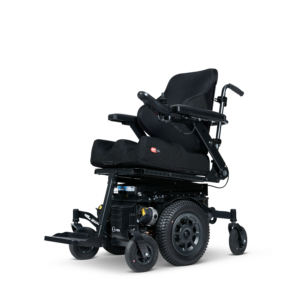


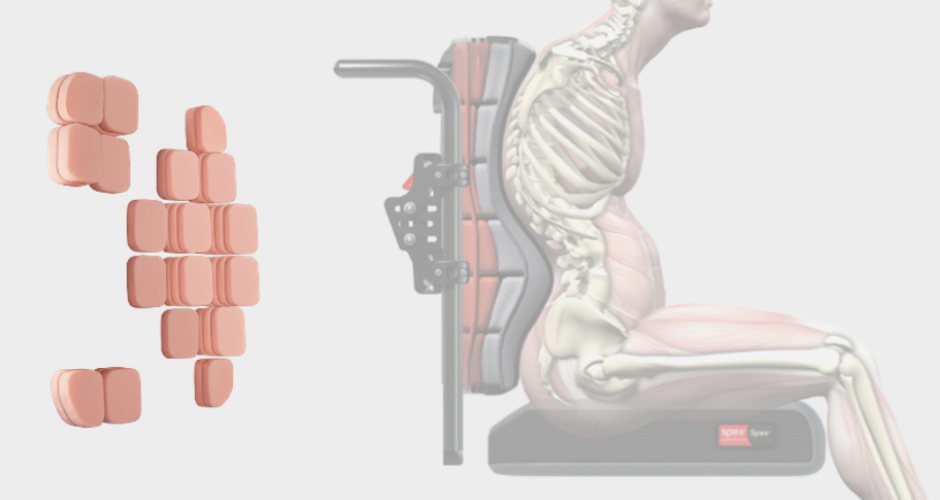

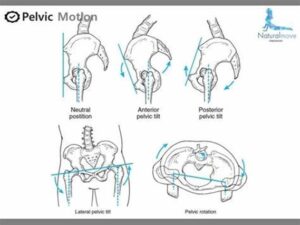 (ASIS) and posterior superior iliac spine (PSIS) are level, allowing an efficient pelvic position above which the spinal curves are maintained. We tend to move towards slight posterior pelvic tilt in sitting and this can change the alignment of the spinal curves.
(ASIS) and posterior superior iliac spine (PSIS) are level, allowing an efficient pelvic position above which the spinal curves are maintained. We tend to move towards slight posterior pelvic tilt in sitting and this can change the alignment of the spinal curves.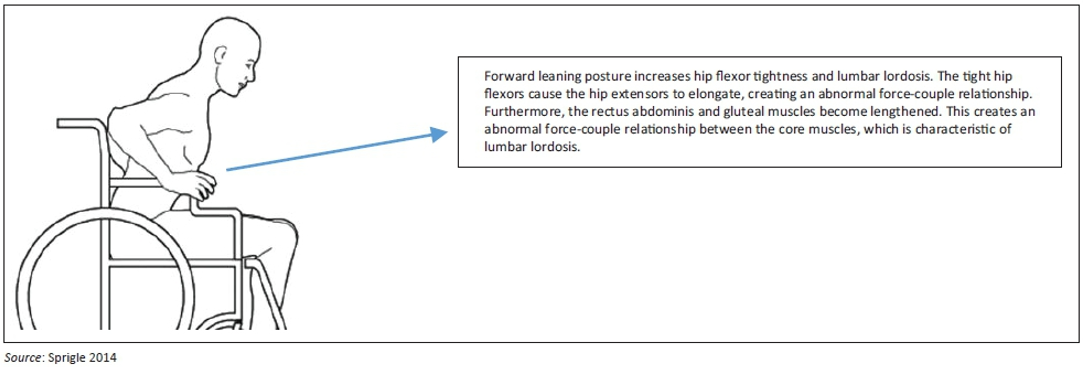
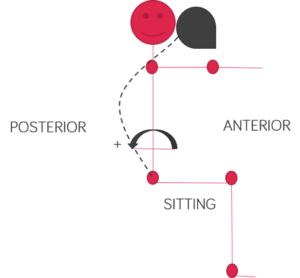 more pronounced. In order to allow the head to be in a functional position, the pelvis may move forward on the seat to accommodate rounded trunk position against an upright/flat back support. The main area of contact on a flat back support will be over the rounded spine, which can lead to discomfort and pain as this area experiences increased pressure against the back support. The wheelchair user may twist side-ways to off-load this pressure and increase comfort, but this will create further postural asymmetry. The line of gravity is likely to fall behind the pelvis which will increase the effort of sitting and the ability freely move the arms and head and neck. This position can also lead to increase pressure risk injury on the user’s bottom and thighs due to changes in the pelvic angle, shear forces and greater pressure over the coccyx.
more pronounced. In order to allow the head to be in a functional position, the pelvis may move forward on the seat to accommodate rounded trunk position against an upright/flat back support. The main area of contact on a flat back support will be over the rounded spine, which can lead to discomfort and pain as this area experiences increased pressure against the back support. The wheelchair user may twist side-ways to off-load this pressure and increase comfort, but this will create further postural asymmetry. The line of gravity is likely to fall behind the pelvis which will increase the effort of sitting and the ability freely move the arms and head and neck. This position can also lead to increase pressure risk injury on the user’s bottom and thighs due to changes in the pelvic angle, shear forces and greater pressure over the coccyx.
